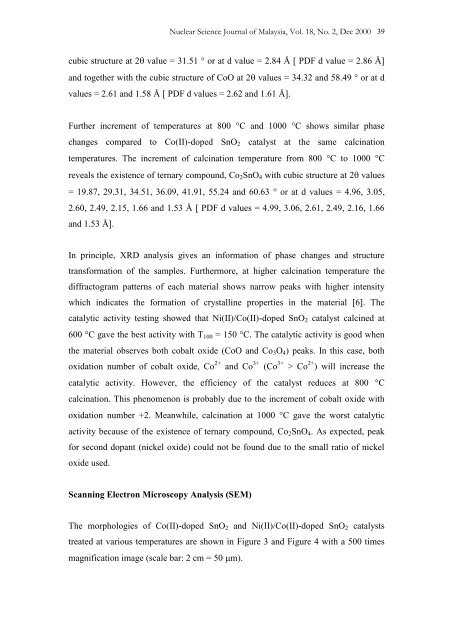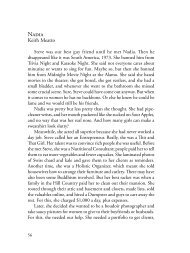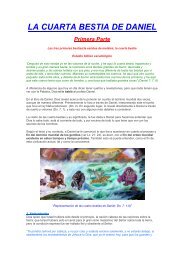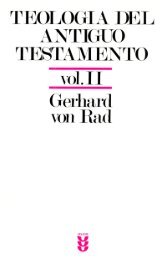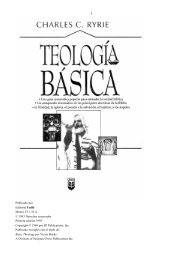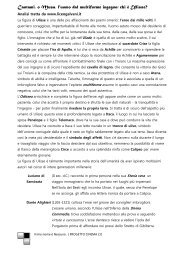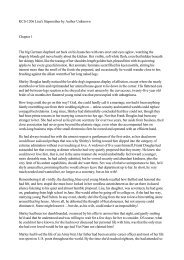application of x-ray diffraction and scanning electron ... - OpenDrive
application of x-ray diffraction and scanning electron ... - OpenDrive
application of x-ray diffraction and scanning electron ... - OpenDrive
Create successful ePaper yourself
Turn your PDF publications into a flip-book with our unique Google optimized e-Paper software.
Nuclear Science Journal <strong>of</strong> Malaysia, Vol. 18, No. 2, Dec 2000 39<br />
cubic structure at 2 value = 31.51 or at d value = 2.84 Å [ PDF d value = 2.86 Å]<br />
<strong>and</strong> together with the cubic structure <strong>of</strong> CoO at 2 values = 34.32 <strong>and</strong> 58.49 or at d<br />
values = 2.61 <strong>and</strong> 1.58 Å [ PDF d values = 2.62 <strong>and</strong> 1.61 Å].<br />
Further increment <strong>of</strong> temperatures at 800 C <strong>and</strong> 1000 C shows similar phase<br />
changes compared to Co(II)-doped SnO 2 catalyst at the same calcination<br />
temperatures. The increment <strong>of</strong> calcination temperature from 800 C to 1000 C<br />
reveals the existence <strong>of</strong> ternary compound, Co 2 SnO 4 with cubic structure at 2 values<br />
= 19.87, 29.31, 34.51, 36.09, 41.91, 55.24 <strong>and</strong> 60.63 or at d values = 4.96, 3.05,<br />
2.60, 2.49, 2.15, 1.66 <strong>and</strong> 1.53 Å [ PDF d values = 4.99, 3.06, 2.61, 2.49, 2.16, 1.66<br />
<strong>and</strong> 1.53 Å].<br />
In principle, XRD analysis gives an information <strong>of</strong> phase changes <strong>and</strong> structure<br />
transformation <strong>of</strong> the samples. Furthermore, at higher calcination temperature the<br />
diffractogram patterns <strong>of</strong> each material shows narrow peaks with higher intensity<br />
which indicates the formation <strong>of</strong> crystalline properties in the material [6]. The<br />
catalytic activity testing showed that Ni(II)/Co(II)-doped SnO 2 catalyst calcined at<br />
600 C gave the best activity with T 100 = 150 C. The catalytic activity is good when<br />
the material observes both cobalt oxide (CoO <strong>and</strong> Co 3 O 4 ) peaks. In this case, both<br />
oxidation number <strong>of</strong> cobalt oxide, Co 2+ <strong>and</strong> Co 3+ (Co 3+ > Co 2+ ) will increase the<br />
catalytic activity. However, the efficiency <strong>of</strong> the catalyst reduces at 800 C<br />
calcination. This phenomenon is probably due to the increment <strong>of</strong> cobalt oxide with<br />
oxidation number +2. Meanwhile, calcination at 1000 C gave the worst catalytic<br />
activity because <strong>of</strong> the existence <strong>of</strong> ternary compound, Co 2 SnO 4 . As expected, peak<br />
for second dopant (nickel oxide) could not be found due to the small ratio <strong>of</strong> nickel<br />
oxide used.<br />
Scanning Electron Microscopy Analysis (SEM)<br />
The morphologies <strong>of</strong> Co(II)-doped SnO 2 <strong>and</strong> Ni(II)/Co(II)-doped SnO 2 catalysts<br />
treated at various temperatures are shown in Figure 3 <strong>and</strong> Figure 4 with a 500 times<br />
magnification image (scale bar: 2 cm = 50 m).


